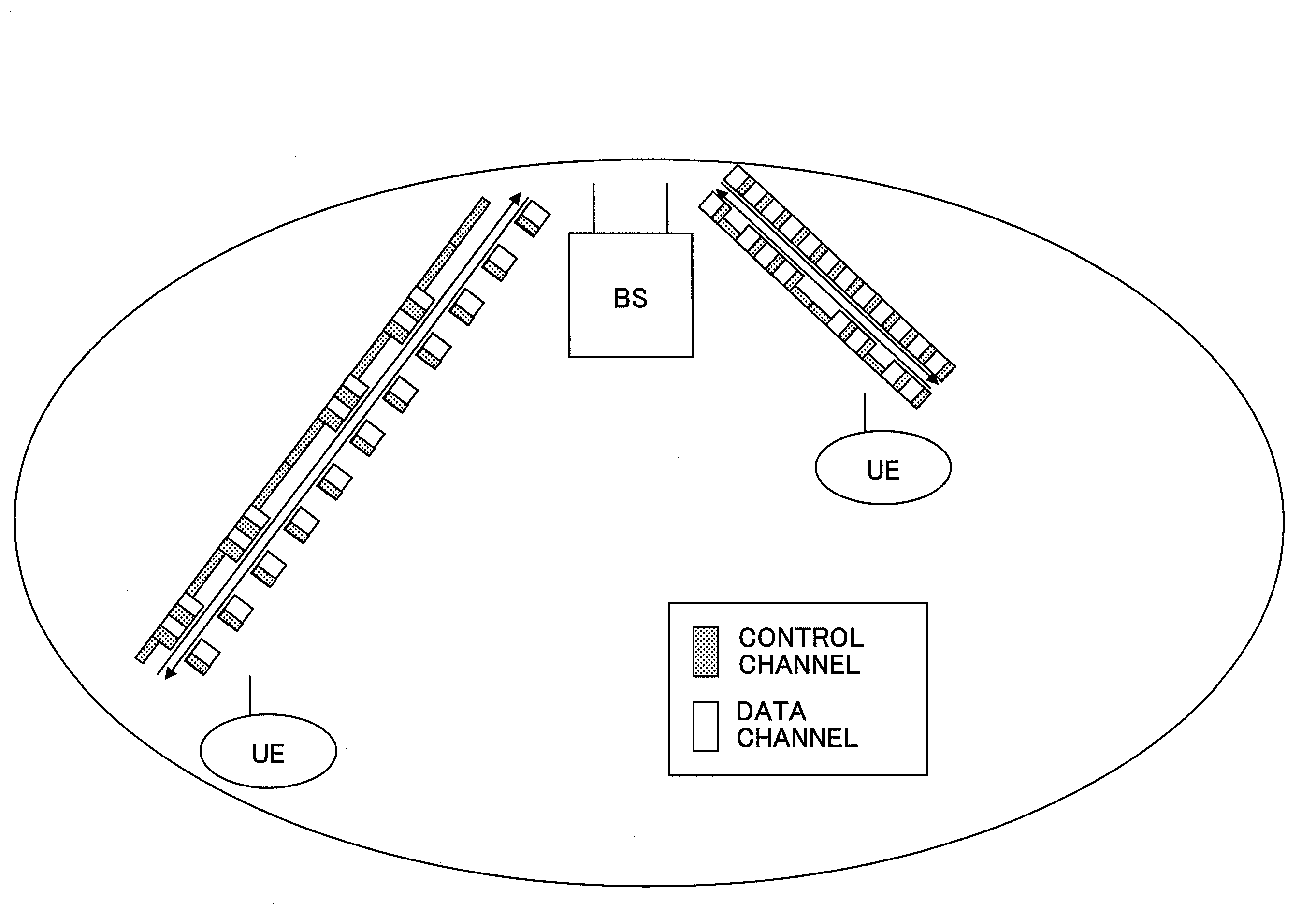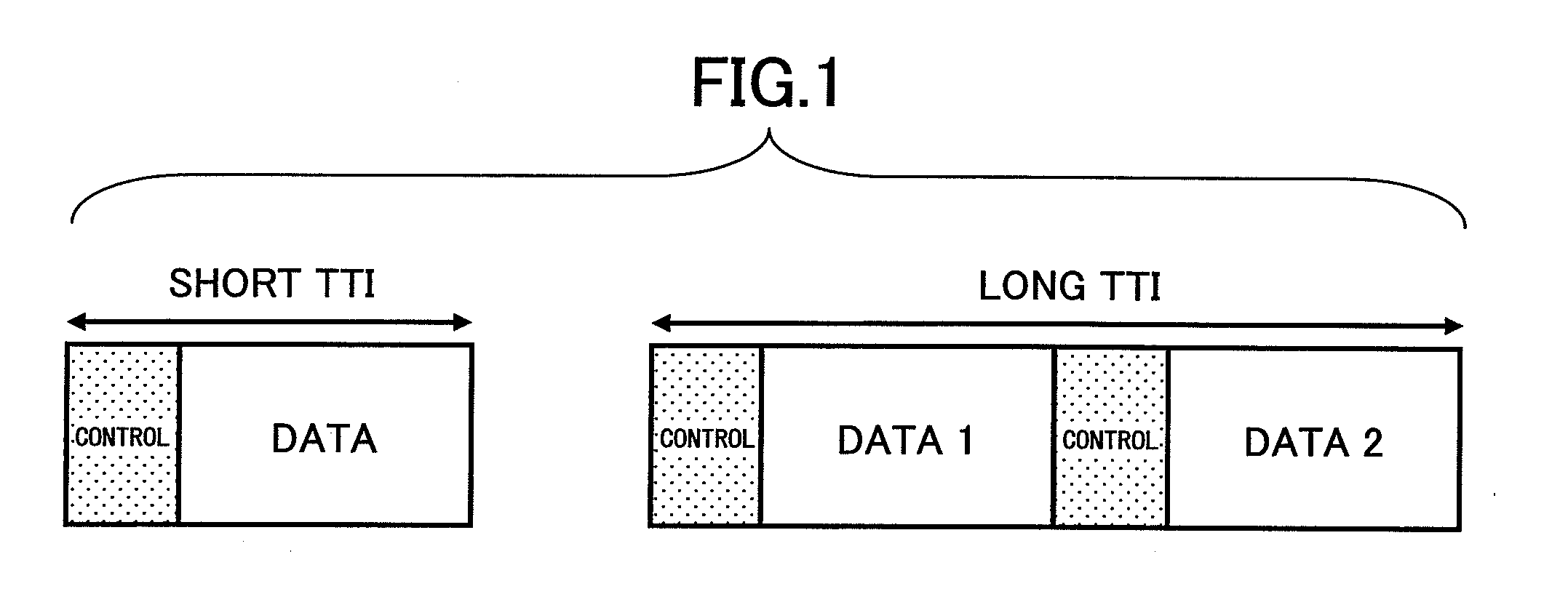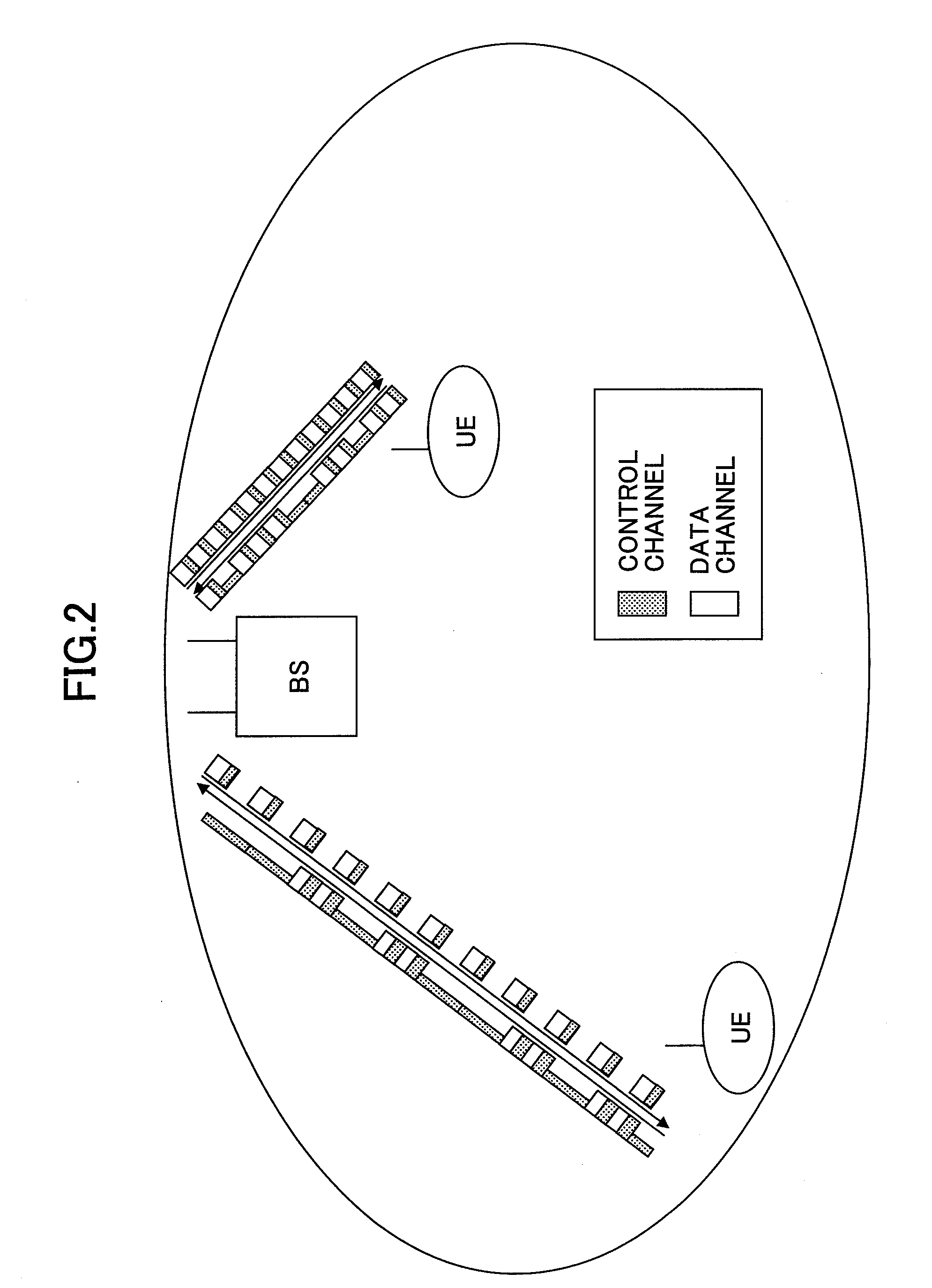Radio base station, user device, and method used in mobile communication system
a mobile communication system and radio base station technology, applied in the direction of electrical equipment, data switching by path configuration, wireless commuication services, etc., can solve the problems of difficult to improve the quality of control channels, and achieve the effect of preventing or reducing the complication of communication device configuration, signal processing, and product testing processes
- Summary
- Abstract
- Description
- Claims
- Application Information
AI Technical Summary
Benefits of technology
Problems solved by technology
Method used
Image
Examples
first embodiment
Base Station—Downlink
[0051]FIG. 3 is a partial block diagram illustrating a functional configuration of a base station according to an embodiment of the present invention. FIG. 3 mainly shows functional components or entities related to downlink scheduling. As shown in FIG. 3, the base station includes buffers 1 through N, a downlink resource allocation unit 32, downlink L1 / L2 control channel transmission power calculation units 1 through N, a coverage determining unit 34, an uplink L1 / L2 control channel transmission cycle control unit 36, and a downlink signal generating unit 38 including a shared data channel generating unit 382 and an L1 / L2 control channel generating unit 384.
[0052]Each of the buffers 1 through N temporarily stores transmission data (downlink transmission data) to be transmitted to the corresponding one of terminals 1 through N and sends the downlink resource allocation unit 32 information regarding the amount of buffered data to be transmitted. Here, “terminals”...
second embodiment
[0100]As described above, using TTIs having different lengths may complicate signal processing. However, this problem may be reduced by appropriately scheduling packets with different TTIs.
[0101]FIG. 17 is a drawing illustrating an example of uplink radio resource allocation. In FIG. 17, a first resource block using a long TTI (2.0 ms) and having a narrow bandwidth and a second resource block using a short TTI (0.5 ms) and having a wide bandwidth are provided. For example, the first resource block is allocated to a user device whose channel conditions are expected to be comparatively poor and the second resource block is allocated to a user device whose channel conditions are expected to be comparatively good. The channel conditions of user devices can be estimated at the base station based, for example, on uplink CQIs and path losses. The CQI may be represented by the reception quality of a reference signal (pilot channel) received at the base station.
[0102]In this example, the fir...
PUM
 Login to View More
Login to View More Abstract
Description
Claims
Application Information
 Login to View More
Login to View More - R&D
- Intellectual Property
- Life Sciences
- Materials
- Tech Scout
- Unparalleled Data Quality
- Higher Quality Content
- 60% Fewer Hallucinations
Browse by: Latest US Patents, China's latest patents, Technical Efficacy Thesaurus, Application Domain, Technology Topic, Popular Technical Reports.
© 2025 PatSnap. All rights reserved.Legal|Privacy policy|Modern Slavery Act Transparency Statement|Sitemap|About US| Contact US: help@patsnap.com



